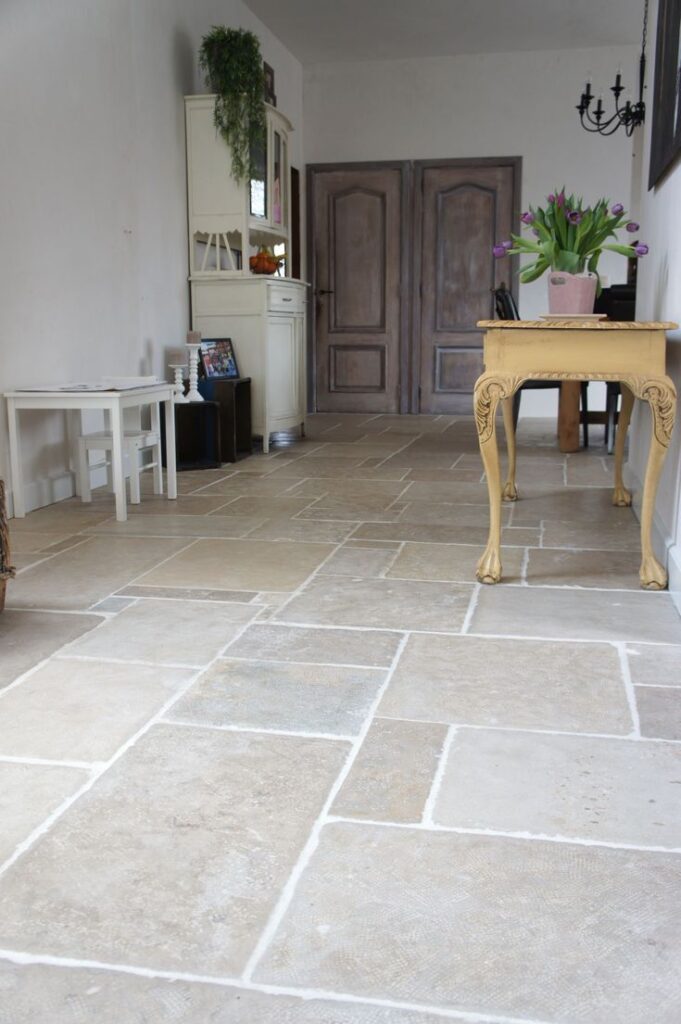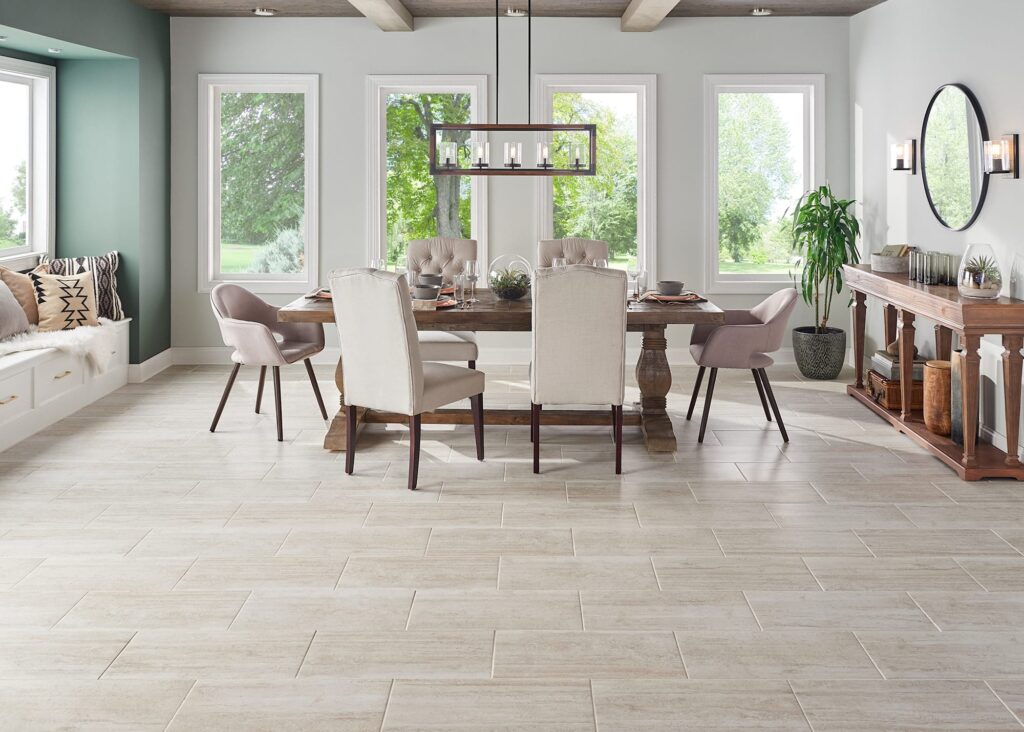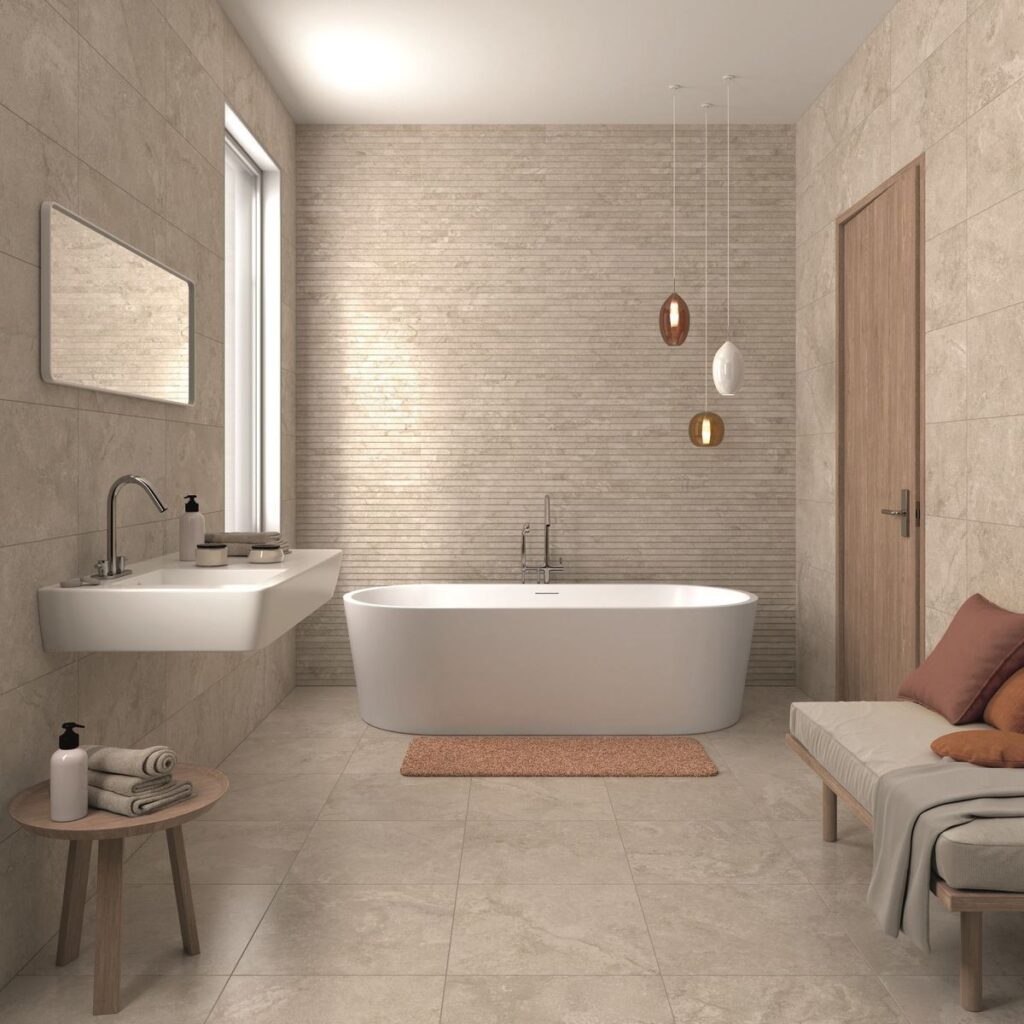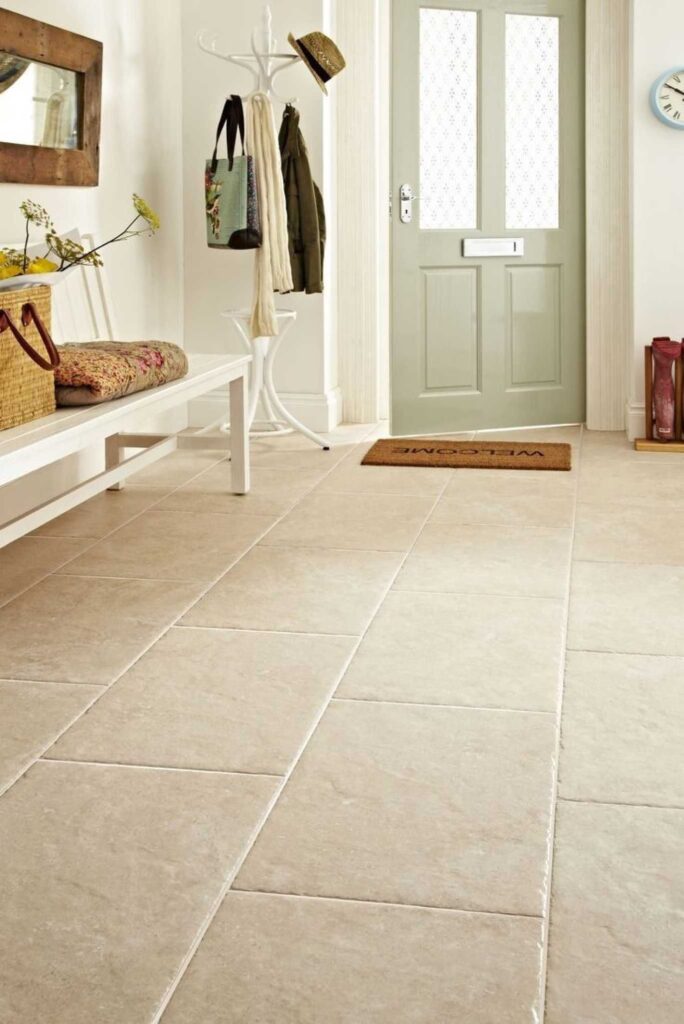
Step Away From The Square
Tiles now come in squares, planks, wood-look, and a plethora of patterns, styles and sizes. Additionally, mosaic tiles, most often used with backsplashes, come in shapes that were never before available.
Honeycomb tile was a historically popular alternative to squares, as was basket weave and penny round, but now you can have tiles shaped in variations of just about any geometric shape and beyond.
Chevron, arabesque, scalloped, kites and a vast selection of unique shapes are now available to give a space a unique look and feel. And these mosaics aren’t just for backsplashes – you can incorporate them into a beautiful design for the flooring as well.
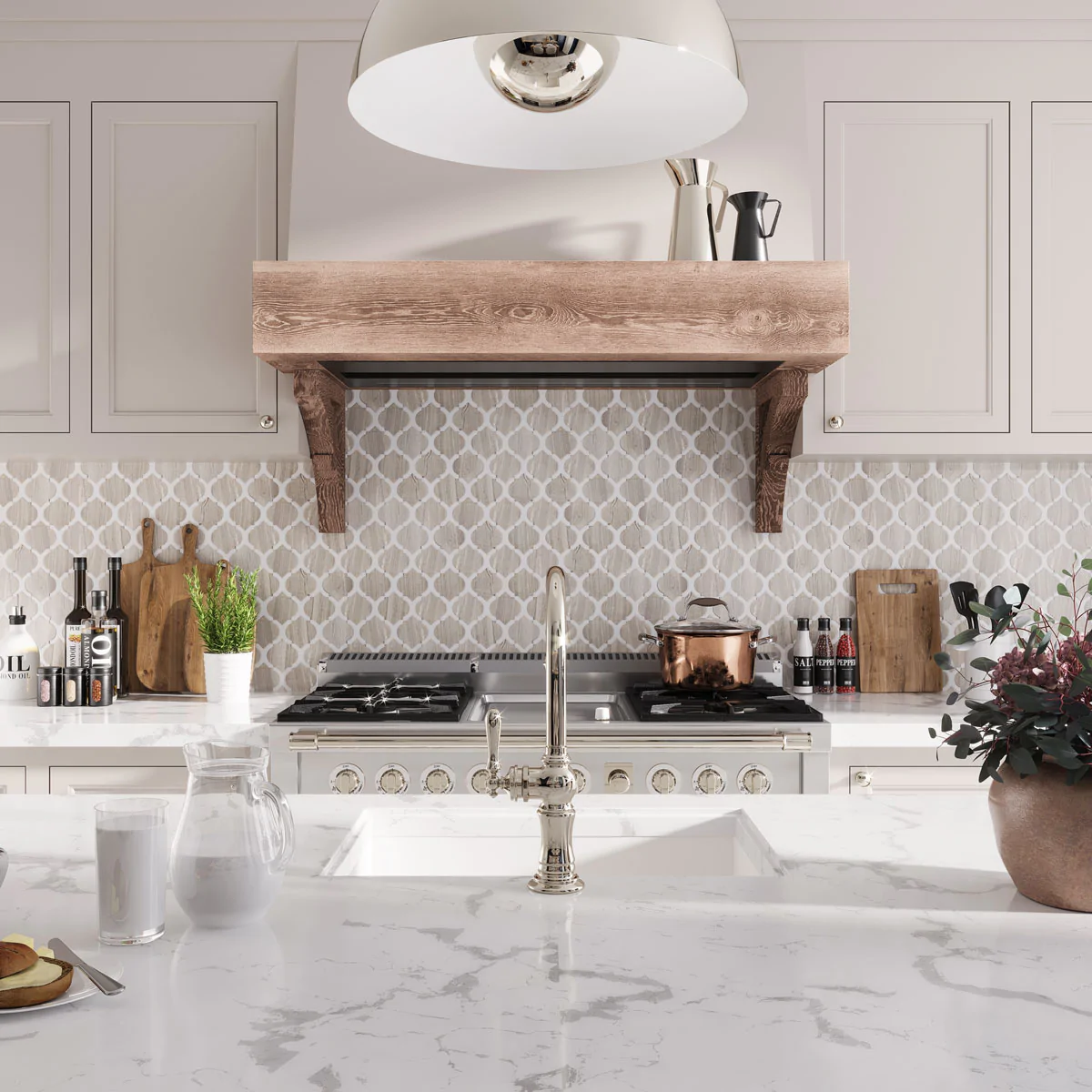
Use Color
A tile design pattern can be made that much more interesting by playing with color. Use the same tile shape on the whole floor and trim out the edges with a contrasting hue, or create a colorful pattern to dress it up.
You can also use different shapes of tile in the same color/pattern for a more subtle differentiation, or variant shades of the same color.
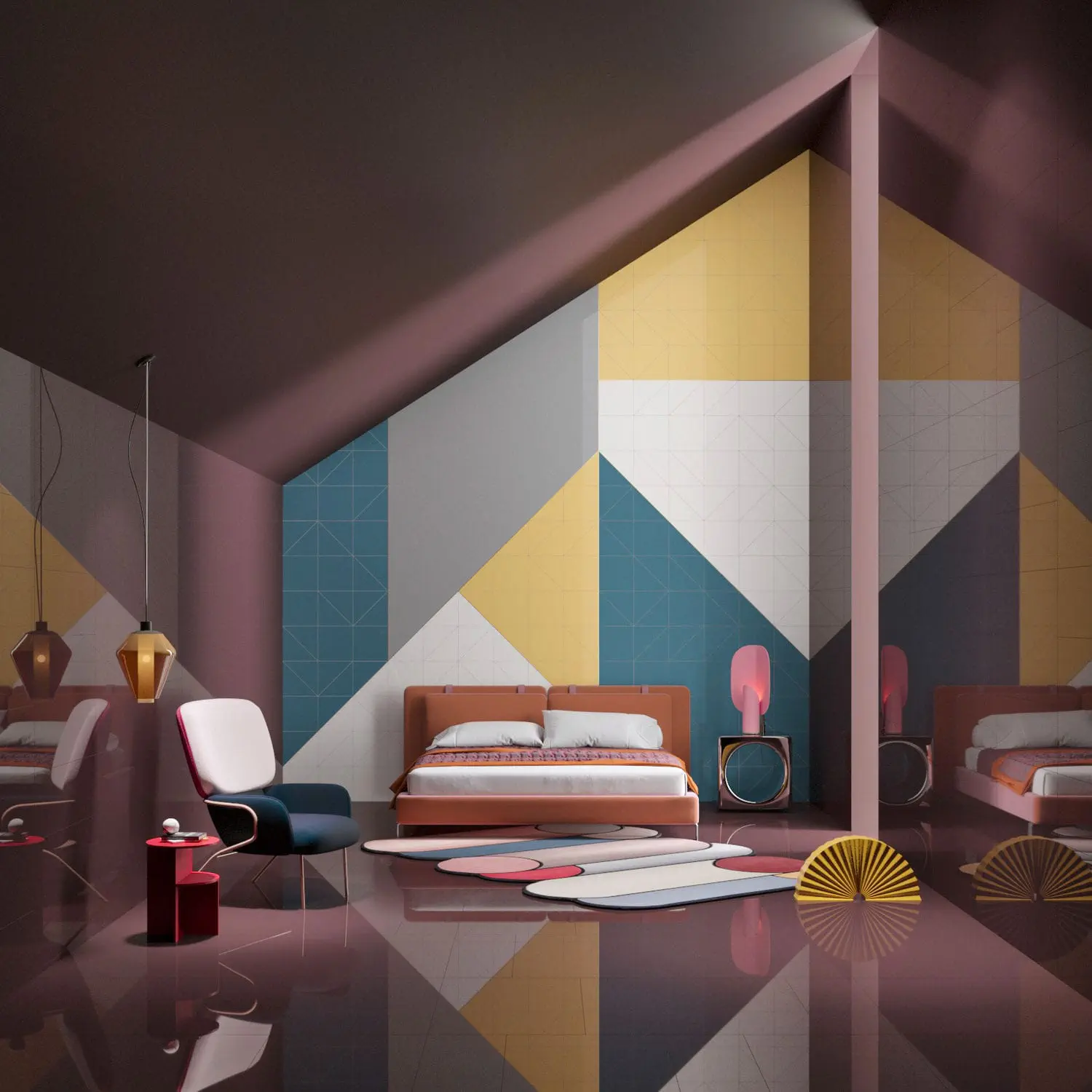
Don’t Stick To Just The Floor Or Just The Wall
Another unique way to dress up a room with tile, especially a bathroom, is to carry the mosaic design from the floor up to the wall. You can also use the same tile from the floor over the entire space.
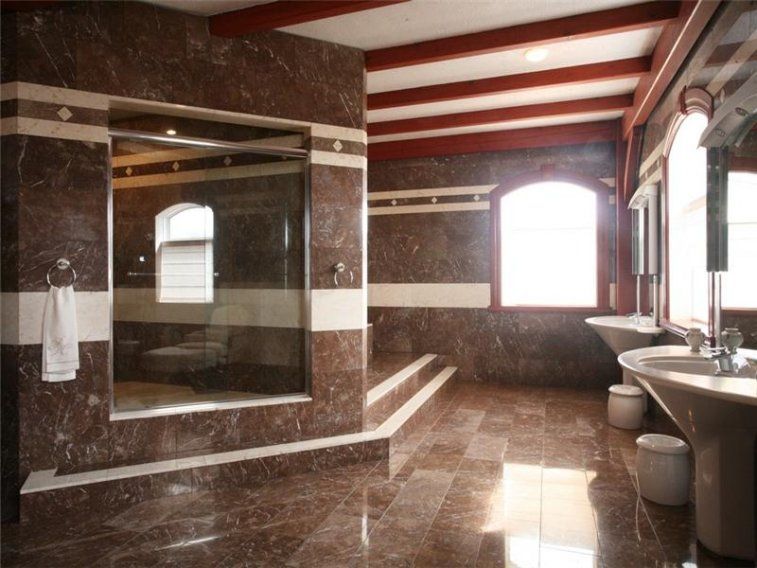
Mix Glazes And Finishes
Create subtle texture with a mix of different tile finishes – some high gloss and some matte – to create a more subtle design. Using matte and glazed tile in the same color to create contrast is a trendy way to incorporate this tip.
Using two different styles of tile, one matte and one glazed, will draw extra attention to the glazed tiles, especially if they’re a high contrast color.
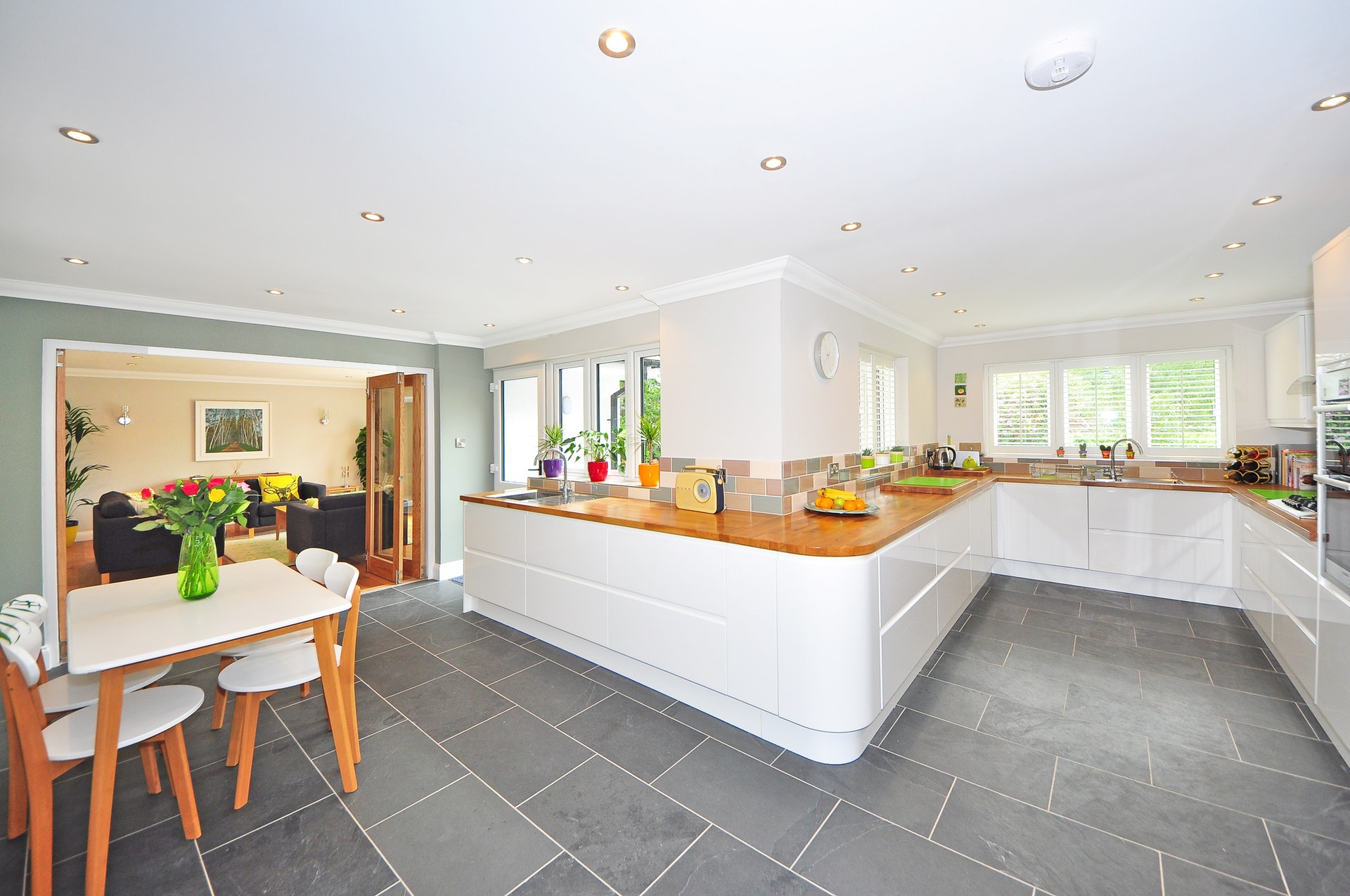
The Many Faces Of Tile
Getting a quick education on tile requires taking a step back to recognize the wide array of choices on the market. For instance, tile doesn’t just come in ceramic squares or rectangles. Today, tile can be made into just about any shape (from baroque to arabesque and more), derived from natural and man-made materials cut into any number of shapes.
And its versatility doesn’t stop at shape and material: Tile is also available in an abundance of colors and patterns, from solid to multicolored. Additionally, the size of tile varies greatly, from small mosaics to long planks — even more accommodating for the home project of your dreams.
With great variety comes great versatility. However, it’s important to note that each type of tile has a particular use. For example, mosaic glass tiles are best suited for backsplashes and do not belong underfoot. Similarly, a larger slate tile may be ill-fitted for a small space. As you examine samples, concentrate on their best uses rather than trying to fit a beautiful marble tile in a place it doesn’t belong. Your objective isn’t to just pick an attractive tile product; it’s also to pick one that makes your design sing. It’s important, too, to consider best tile placement. The good news is that it’s functional just about anywhere — on floors, walls, trim, or as surrounding surfaces (like curtaining tubs and fireplaces).
From glossy and shiny blues and greens to textured pebbles and stones, tile absolutely runs the gamut. From classy to eclectic to downright fun, tile is a transformative option for any budget.
When To Take Advantage Of Tile
Obviously, tile is a classic material that can be found in the majority of homes, regardless of decor. Well-maintained and beautifully installed tile can increase a home’s value, especially if it perfectly fits the space and ambiance of a room.
But in most cases, tile is relegated to revitalization projects located in areas with water contact. Although a homeowner might ask you to install a fireplace surrounded by tile, it’s unlikely you’ll place a tile floor in a bedroom or den. Generally speaking, tile has its place in high-traffic areas where people expect to spend a lot of time but prefer not to have carpets or hardwood floors.
Ceramic and Porcelain Tile
Tile has indeed come a very long way in recent years, so your enthusiasm is understandable.
Then you begin to try to hone in on which tile floor to choose. Suddenly, your eyes are glazing over as you find out that you need to be concerned about things like PEI and COF, along with caliber, soluble salt, and water absorption levels. And why is “rectified” tile important to me? Yawn.
Well, it’s rather like the preverbal box of chocolates dilemma. You won’t really know what you’re going to get unless you look inside.
When it comes to tile flooring, real beauty is much more than skin deep. Or, in keeping with the box of chocolates analogy, if your taste buds are hankering for that dark chocolate-covered caramel, you don’t want to end up biting into milk chocolate brittle or a nut chew…or that chocolate covered cherry.
4 Key Ceramic And Porcelain Tile FAQs
What is Porcelain Enamel Institute (PEI) Rating?
- Brief history: PEI was founded in 1930 to establish consumer guidelines for glazed tile purchasing (e.g., wear rating). The goal is to select the right tile flooring for the right surface.
- Does it apply for both ceramic and porcelain tile? Yes, but due to the innate hardness of porcelain, the rating generally means more to those considering ceramic tile.
- The Scale:
- 0 = unsuitable for floors: sassy looks for your walls and/or countertops
- 1 = very light traffic: suitable for walls, countertops; for flooring where only non-jumping beings weighing 30 pounds or less may enter
- 2 = light traffic: for walls and countertops; for flooring in sitting rooms and personal libraries (aka, no major traffic areas)
- 3 = moderate traffic: all residential use, as in tile away (not for commercial applications)
- 4 = moderate to heavy traffic: all residential use and light commercial such as lobbies and restaurants; or for homes that host school sports teams
- 5 = heavy traffic: all residential use plus heavy commercial, like airports; or for your private plane hanger
What’s the difference between ceramic and porcelain tile?
- “In general, porcelain tile is harder than ceramic and offers greater design flexibility. Although both are made from clay and other naturally occurring materials fired in a kiln, the clay used to make porcelain tile is more refined and purified.” (Source: bhg.com)
- Ceramic tiles are softer and easier to cut than porcelain, usually suitable for very light to moderate traffic, and have a relatively high water absorption rate.
- Porcelain tiles generally are dense, impervious, fined grained and smooth. They have a much lower water absorption rate, and are suitable for all residential and commercial/industrial usage.
Why do I need to know about shade, caliber, rectified, soluble salt, and water absorption levels?
- Shade = color variations from carton of tiles to another
- Caliber = shrinkage percentage shifts due to moisture fluctuation from kiln curing, from one carton of tiles to another
- Rectified = mechanically finished on all sides to achieve uniformity and precision, for exactness of size and ease of installation
- Soluble salt = surface treatment of some porcelain tiles
- Water absorption levels = not a porcelain tile with greater than 0.5% absorption (therefore not suitable for outdoor installation)
What should I consider generally in selecting ceramic or porcelain tiles for my flooring?
- Choices of style and colors
- Depth of color and pattern
- Durability
- Temperature factor (cool to cold feel may require radiant heat source)
- Ease of cleaning and maintenance
- Resistance to water damage, bacteria, and odors
Bring The Beauty Of Nature Home
Bring The Beauty Of Nature Home
In the hustle and bustle of daily life, we are often unaware of the natural beauty right outside our front doors. Urban environments can
further remove us from the stunning landscapes awaiting us. Imagine if you could bring that organic beauty into your home. After all, nature
calms us. It forces us to slow down, relax and appreciate what’s right in front of us. Here are a few ways you can bring that aesthetic into every room of your home.
Come On In
Our entryways tend to become somewhat utilitarian, don’t they? The design you step into seems to focus much more heavily on function than form. But first impressions are important, and your entryway is the first glimpse guests receive of your home.
Try incorporating earthy tones and textures that blend your indoor and outdoor spaces for a truly seamless design aesthetic.
Carry your inspired-by-nature theme to the second floor of your home with a warm, inviting, tiled staircase.
Water, Water Everywhere
Bathrooms are known for getting wet. Which is why typical tile is par for the course in most bathrooms. You can achieve
whatever look you’re after, whether it’s marble, wood or stone, textured or sleek.
Maybe you love the look of wood floors but worry about excess water ruining the floors. Take a cue from natural
outdoor bodies of water. Khaki-tinged sand, green marshes and shades of blue all convey the feeling of being surrounded by water. Incorporate all the beautiful tones of your favorite beach, lake, ocean or lazy river stream.
Live Comfortably
Living rooms are meant to be lived in. That means comfort is just as important as style.
With natural linen and silk-inspired ceramic tile, you can have a soft, sophisticated look in any room of your home. Choose soft neutral
shades or more substantial colors inspired by the outdoors for a space that is uniquely your own.
In the Kitchen
Trendy mosaic patterns make great topics of conversation for those dinner parties. Take a cue from the views outside your kitchen windows.
Kitchen Backsplash
It has a very practical purpose…that is, keeping the liquid-y stuff on your counters from splashing back onto the walls behind them.
However, if in your kitchen remodeling plans you consider your backsplash purely from a practical perspective, you’re missing out on an inspired opportunity to create a focal point (some might even say a work of art). One that can elevate your kitchen from a simple cookery to a culinary showcase.
So, how can you create a kitchen backsplash that is as awe inspiring as it is effective? Start by looking at the style of your kitchen and let it be your guide. Ultimately, you want a backsplash that stands out because it enhances your kitchen’s style and personality, not because it clashes with it.
Materials Can Make The Difference
One of the most fun (and most challenging) aspects of creating a kitchen backsplash is choosing the material you’ll be using. Forget about basic square backsplash tiles. Today, trendy backsplashes are bringing high style to kitchens, with earthy materials such as natural stone and pebble tile, or modern, sleek stainless steel.
A backsplash made of chalkboard can ensure that you always have a handy space to jot down an item for the grocery list, or to remind the kids not to leave dirty dishes in the sink.
Even tile, the traditional choice, now offers options that are anything but traditional. Decorative insets help punctuate spaces with personality.
Or for a bright new idea, reflective glass tiles give your backsplash the ability to reflect light, and make your space seem more illuminated. A glass backsplash is mildew and stain resistant, and even eco-friendly because it can be made out of recycled material.
Inside Out
Pool decks, patios, screened in porches… your outdoor property provides additional living space and its aesthetic shouldn’t be overlooked. Design a unique fireplace, fountain, or front stoop using natural stone for a customized look.


